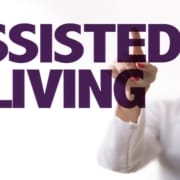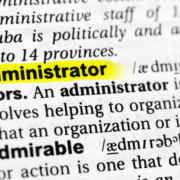How to Turn Your Home Into an Assisted Living Facility
In California, there are currently 7,500 licensed Residential Care Facilities for the Elderly (RCFE) with occupancy levels at approximately 174,000 beds.
Other names associated with RCFE have assisted living facility, board and care home or retirement home. These are all RCFE’s and they all have the same regulations. According to a recent report by the California Advocates for Nursing Home Reform, there is a growing demand for increased assisted living facilities and capacity.
In this demanding environment, many RCFE administrators are looking to convert their homes into an assisted living facility. Indeed, operating an RCFE out of your home can be a fruitful and rewarding endeavor, but it’s important to understand what you are getting into.
For the purpose of this article, we will explore some of the considerations of opening an RCFE in your home and provide some information that can help you decide if opening a small RCFE is right for you.
Preliminary Considerations of Opening a Home RCFE
Operating an assisted living facility is a meaningful privilege, but also a heavy responsibility and a state-regulated endeavor. Before you begin this journey here are some suggestions to consider as you begin the initial process of licensing your home as an RCFE.
- Make sure you are committed to the project and the thought of losing the privacy of your home life.
- Create a mission statement which is a set of goals you hope to achieve by opening your home as a senior facility.
- Research state laws and local zoning regulations about assisted living facilities and determine if your home is compatible.
- Take all the state-mandated RCFE classes to assure you have the proper training and information to begin the licensing process.
Like any other business, you will want to create a solid business plan. This plan will help guide you so that you will always know “what’s next.”
Evaluate the Local Need for a New Assisted Living Facility
Like most other businesses, you will want to begin by determining the need in your area for the services you are offering. Your future residents are the cornerstone of a successful RCFE, so give them top priority as you put a plan in place.
Even with a building that meets requirements, proper licensing, administrator certification and compassionate staff, you cannot run a successful facility without an adequate number of residents. You also need to consider the number of bedrooms, bathrooms and available living space in your home.
Keeping your rooms occupied and your residents happy is vital to the success of your RCFE.
So how can you determine the need for assisted living in your area?
Consider these resources:
Visit the CDSS website www.cdss.ca.gov and select the “Find licensed facilities” box. You can search by city or zip code to locate facilities in your area.
- Contact local government agencies and organizations that serve senior citizens.
- Research and visit assisted living facilities in the area.
- Talk with patient advocates at local clinics and hospitals.
- Reach out to regional assisted living training institutions, including community or technical colleges.
Begin the Process for an RCFE License
Once you have done your homework, verifying that there is an adequate need in your community, then turn your attention to obtaining proper credentials.
In California, CDSS requires that you have an RCFE license for your home before you admit any residents for care. You also personally need RCFE certification to prove you completed training and have the knowledge to safeguard the residents. As the owner of a home turned into an assisted living facility, you will need both.
It is important to keep in mind that RCFE licensing and RCFE administrator certification training takes time, patience and resources to complete.
The process begins by taking the required orientation course on the California Department of Social Services website.
Additionally, you will also have to fill out an application and sign up for an accredited RCFE administrator training course. You will also have to meet state educational and experience requirements when applicable.
The required qualifications are generally reasonable and you should be able to obtain any that you might be missing, but this can add some time to the certification and licensing processes.
One important requirement to plan for is the CDSS requirement that you show proof of three months of operating expenses in designated savings accounts before approving your license.
Once you have completed your certification and submitted your RCFE licensing application, CDSS will begin processing the application in Sacramento.
Once your paperwork has been reviewed and any missing paperwork submitted, your application packet will be sent to the local CDSS office that will oversee your facility.
A Licensing Program Analyst (LPA) will be assigned to your facility. The LPA will contact you and set up the Component II interview. Once this interview has been conducted, the LPA will order a fire inspection and verify operating funds in your account.
Finally, after you have received approval from the local fire marshal, LPA will send a checklist and schedule an on-site visit to inspect and approve your home.
Use the Wait Time Wisely
Sometimes it can seem like there is a lot of downtime in this process, but there are actually a lot of ways you can utilize that to your advantage.
While you are waiting for the DSS to review your license application, we suggest you also work on marketing your facility to prospective residents as well as finding caring, competent and reliable employees to help run your facility.
Although you may adjust your opening date along the way, you will want to have employees trained and your home ready for admissions when you do open your doors.
Seek Professional Assistance
As our population continues to age there will certainly be an increase in the need for high-quality RCFE’s.
If you feel like this could be a good fit for you, then the first step is to do your homework and create a plan.
If this process seems overwhelming, you would be correct.
CDSS has guidelines they follow during the application process and if you do not reply or submit missing documents in time, you could be at risk for CDSS to deny your application. This would mean you are not allowed to resubmit an application for one year.
Yikes!
To prevent this scenario from happening, you would be wise to seek the assistance of someone who has experience in licensing and working with CDSS. To ensure that you do everything correctly the first time and save precious time during the licensing process, Assisted Living Education can help. Our experience and positive relationship with CDSS can save you time and money while you complete the process to get your building licensed. We have assisted 100’s of individuals successfully obtain a license for their buildings and helped them on the path to having a viable and safe assisted living facility.
If this is something you are interested in, don’t hesitate to reach out to us. We are here to help.














